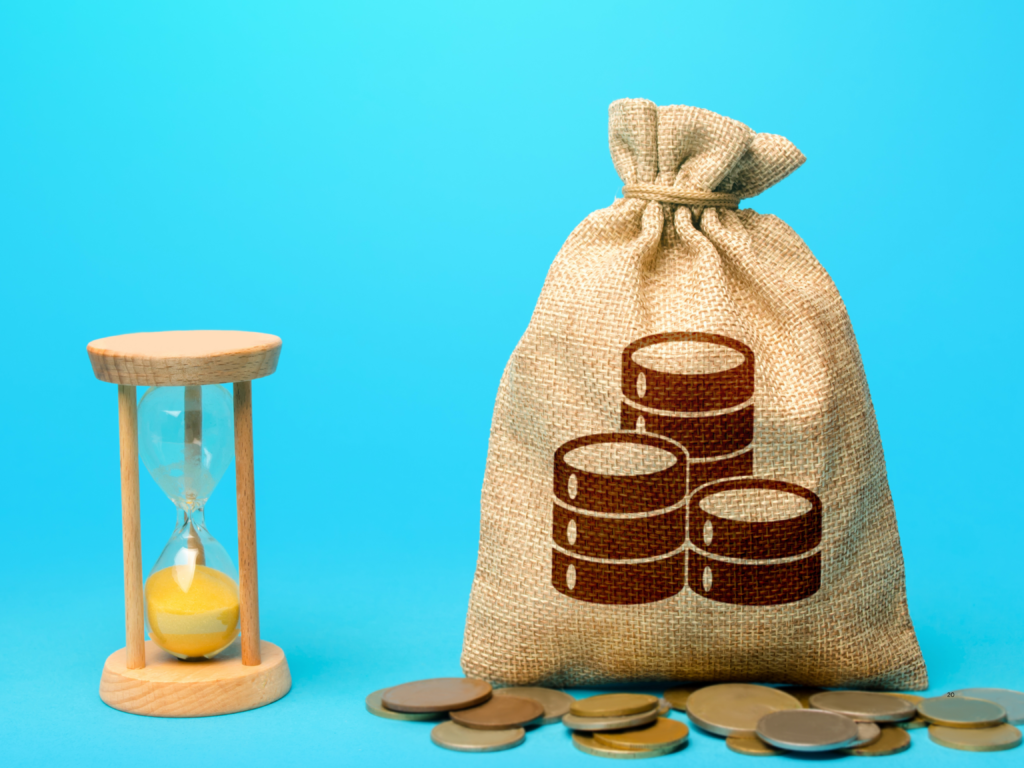
A government report cautioned that the swirling threat of tariffs—and the uncertainty they carry with them—risks hurting consumers and slowing the broader economy. And when businesses and households are uncertain whether tariffs will be and to what degree they will be imposed, they’re much more likely to postpone spending and investment.
Such a “wait and see” approach can result in a decline in consumer demand, which is important because consumer spending makes up much of U.S. economic activity. Also, businesses may delay ordering new equipment or expanding operations because they worry that higher costs will eat into profit margins, which would further stifle economic growth.
Tariff uncertainty can also throw a wrench in global supply chains. Importers may attempt to “front-run” the likely increases by stockpiling goods, only to see demand decline later, once those goods have already been bought.
In the longer run, prolonged uncertainty may compel firms to reorganize their supply networks—a costly and time-consuming process that could result in a lasting loss of economic efficiency.
Combined, these factors—inflation-fueled rising prices, dwindling consumer spending, and reluctant business investment—could weigh on U.S. economic growth and lead to slower job creation, posing a risk to the economy at large.
Tariff Threats and Job Cuts
The report opens with the observation that warnings continue to come from Washington about possible tariffs—additional taxes on foreign goods—and possible cuts to government jobs on a massive scale. Such moves can create uncertainty.
When people see news that their government may subject important trading partners to increased duties or cut public sector jobs, they often feel less confident about the future.
Impact on Consumer Spending
Even while incomes increased, the data shows consumers have reduced their spending—by the largest amount since February 2021. That would mean that when people have more money, fear and uncertainty about economic policies (such as tariffs or job cuts) could make them reluctant to spend.
In effect, the fear of potential macroeconomic instability is triggering happier food/entertainment spending, while other areas of the economy are flourishing.
Inflation Trends and Future Price Pressure
There is a bit of good news: inflation—which is the rate at which prices for goods and services rise—has eased. However, there’s a catch. President Trump’s threats to levy steep import taxes on countries such as Canada, Mexico, and China—the top sources of goods imported into the United States—could also drive up prices.
Tariffs tend to increase the price of imported goods because businesses generally pass on these higher costs to consumers. Some businesses are already raising their prices in preparation.
To Sum Up
Even if the overall economic picture seems relatively healthy, uncertainty from possible tariff increases and government job cuts is prompting consumers to reduce what they spend.
That caution and the potential for higher prices from tariffs could complicate the economy even if some plain indicators, like inflation, seem to be getting better.
Lower Spending in January
Americans spent 0.2 percent less in January than in December, the Commerce Department said. A 0.2% decrease might sound small, but it indicates that consumers are spending just a little bit less than they have been.
Weather and Caution
Some of this decline is due to unseasonably frigid weather, which probably kept people inside and out of stores. But the dip may also signal deeper worries. As economic uncertainty grows, consumers appear to be getting more cautious—delaying spending for fear of what’s to come.
Impact of Constant News
“Breeze” is his word for the “roller coaster” of news out of Washington, D.C.—often involving unpredictable political machinations and policy shifts—that is moving both businesses and consumers.
In other words, constant dramatic headlines have made Americans gun-shy to large purchases or investments.
Surge in Imports
But imports boomed in January, even as domestic spending declined. This probably represents companies scrambling to buy goods ahead of tariffs that could go into effect—a practice called “front-running.” Businesses could be importing more now out of fear of future price increases.
Economic Forecast
Putting all these pieces together—the decline in consumer spending, the surge in imports—the Federal Reserve’s Atlanta branch has adjusted its outlook, predicting that the U.S. economy could shrink by 1.5 percent at an annualized rate in the first quarter (January–March).
That’s a marked slowdown from the 2.3% growth recorded in the last three months of 2022.
Slower Economic Growth Forecast
Although most analysts still expect the economy to grow in the first quarter, they see the expansion as being much weaker than in the past. One economist, Stanley, downgraded his forecast—from an earlier prediction of roughly 2.25 percent growth to a new estimate of only 1.25 percent. Such a sharp decline perhaps implies that growth is on the cards, but it may not be sufficient to translate into an upturn in the economic conditions quickly.
Cooling Inflation
On the inflation front, the news is slightly better. Overall inflation declined, to 2.5% in January from the same period a year earlier, from 2.6% in December, according to the Commerce Department.
When you strip out the effects of the more volatile food and energy sectors—what economists refer to as core inflation—the rate fell even further, from 2.9 percent to 2.6 percent, the lowest it’s been in June.
Many see this cooldown in prices as good news because it means the prices of goods and services are rising less quickly, which can help preserve the purchasing power of consumers.
Potential Risks From Tariffs
So encouraging is the trend toward lower inflation that so many economists worry that the gains could be undone by new trade policies. President Trump proposed hefty new tariffs on imports, including a 25 percent duty on imports from Canada and Mexico.
(the Canadian oil would get a lower 10 percent levy) and an intention to increase the existing tax on Chinese imports by 100 percent to 20 percent.
Tariffs function in many ways, like taxes on foreign goods that can raise prices for consumers and businesses alike, possibly undoing progress in finally cooling inflation.
Concerns Over Federal Workforce Reductions
Trump is also calling for massive layoffs of federal workers. If massive cuts to hundreds of thousands of federal jobs are made, this may be followed by an increase in the unemployment rate.
From my view, losing jobs is not just bad for the people who lose their jobs but can also meaningfully impact consumer spending, the overall economy, and growth.
Impact on Production Costs
World Emblem makes patches, labels, and badges, and across its plants, roughly 60% of its production is done in Mexico. If the tariff were enacted, the cost of bringing these goods into the United States would skyrocket. Carr thinks the company will need to raise its product prices by about 5% to 10% to cover this additional cost.
Job Cuts in the U.S.
Increased costs and tightened profit margins would drive the company to cut costs. Carr says that to balance out the added load, he may have to cut “a handful” of jobs among his 500 U.S. employees. That means some employees could be let go as a way to control soaring costs.
Cancellation of Planned Investments
World Emblem had intended to invest around $9 million in new technologies like artificial intelligence and internet commerce. Presumably, these expenditures are planned to revamp operations to fuel future growth.
But the added expense and financial uncertainty of the potential tariffs would mean those plans would need to be put on hold, delaying the company’s progress in those areas, the company said.
Uncertainty and Frustration
Carr is deeply frustrated with the state of affairs, having stressed his belief that the current climate of uncertainty (“volatility”) is substantially undermining effective planning for the future.
“Until the administration communicates something final, the business is in limbo and hasn’t been able to plan or make difficult decisions because there’s no clarity in terms of outcome,” he says.
Interest Rate Policy to Curb Inflation
What’s Happening:
The Federal Reserve (known simply as “the Fed”) announced that it’s leaving its most important short-term interest rate at 4.3%. In January, they made this decision as part of plans to contain inflation.
Why it’s Important:
High rates make borrowing an expensive endeavor, with banks responding by increasing the cost of credit. This makes loans for items such as homes, cars, or credit card debt more expensive. The idea is to slow the pace at which individuals and businesses are borrowing money and spending, which can help lower the level of prices throughout the economy back toward the target inflation rate of 2 percent.
Key Takeaway
This is a gentle way of describing the Fed’s current strategy of constraining the economy by maintaining high interest rates, which push up the cost of loans like mortgages and restrain spending. They are based on a particular measure of inflation that excludes several volatile items to arrive at a smoother picture of price fluctuations.
This strategy comes as policymakers respond to a recent bout of extremely high inflation, which is already beginning to come down. The objective is to rein in inflation to a stable, moderate rate conducive to long-term growth.




